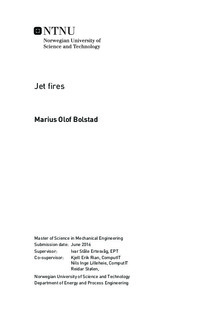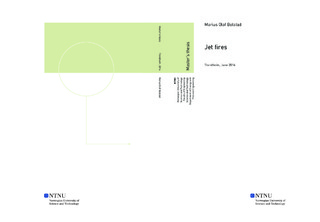| dc.description.abstract | Knowledge of the impacts of fire is a big part of hazard analysis, and thorough fire predictions could potentially save both life and belongings. In the 1990 s, a set of fire tests on compartment fires was conducted at SINTEF NBL in Trondheim, Norway. The results from the tests have, until recently, been restricted from public view. The partly release of the results from the fire tests has presented the opportunity of conducting simulations based on the fire tests, for validations of simulation software. In this thesis, simulations of one of the fire tests, fire test JF5, in Blast and Fire for Topside Structures, Test Programme F3, have been conducted in the gas dispersion and fire simulator Kameleon FireEx (KFX) by Computational Industry Technologies AS (ComputIT), for a parameter study on fire development in under-ventilated enclosures and for comparison between experimental data and numerical simulations.
The simulations conducted in this thesis, have shown large impacts on fire development from parameters with uncertain modelling. The droplet diameter in the fuel spray and the enclosure modelling were decisive on flame development in an under-ventilated enclosure. The results revealed differences between the simulated cases that was related to combustion in the upper layer of the compartment. Simulations with combustion in the upper layer of the compartment, recorded significantly higher temperatures, than the simulations without combustion in the upper layer. The combustion in the upper layer of the compartment seemed to highly depend on air entrainment. Parameters that affect flow and air entrainment, on the inside of the compartment, are therefore important.
The results obtained do not make it possible to draw any certain conclusions on validity and reliability of the computational software, for simulating under-ventilated fires. The modelling uncertainties of parameters that were of great importance were too large. Further research into important parameters, and how they should be modelled, are needed. | |

